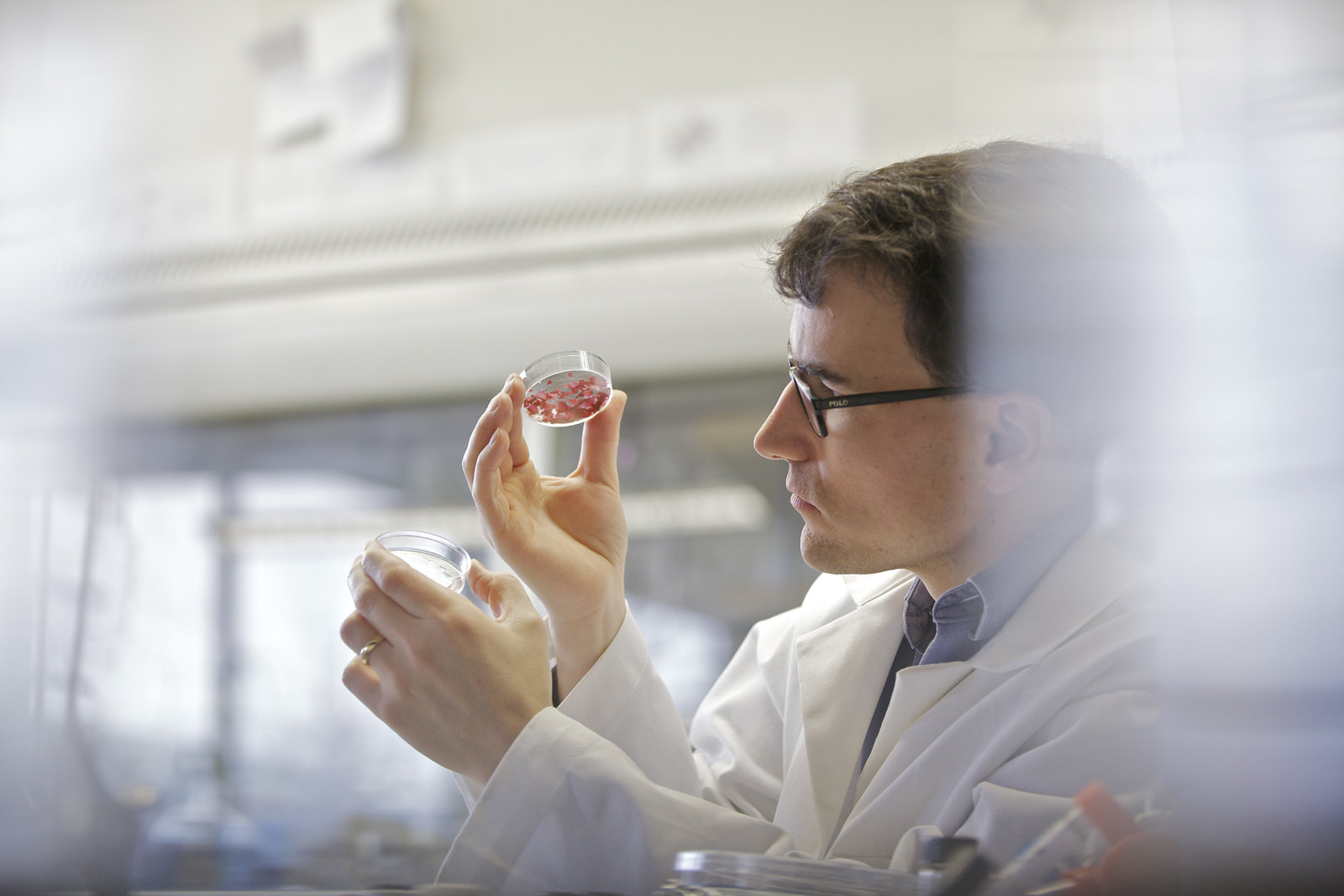A Q+A with UBC’s new Dean of Science, chemist Mark MacLachlan
April 2, 2025

April 2, 2025

Dr. Mark MacLachlan, Canada Research Chair in Supramolecular Materials and the new Dean of Science at UBC, discusses his path from small town-B.C. to UBC, his love of Hawaiian shirts, and the challenges and priorities facing the Faculty.
I felt well prepared from high school and studied hard at UBC. Early in my first year, I already had my eyes on becoming a professor. I remember sitting in the back of CHEM B250 and seeing my professor—an enthusiastic Dr. Chris Orvig, now emeritus—lecturing, and I thought, “Wow, that seems like a great job!” My moves to Toronto then to MIT profoundly shaped my research interests, and my leadership and management styles. I learned from fantastic mentors, and brought those skills back to UBC.
The focus on collaborative research will certainly continue. Strengthening our relationship with government, with the community, with our alumni and supporters, and with other leading academic institutions is crucial. These relationships are pivotal for strengthening our research, attracting and retaining talented undergraduate and graduate students and postdocs, and building our reputation.
We’ll also continue to enhance our experiential learning opportunities through co-op, work learn and undergraduate research options. UBC Science is incredibly strong academically, and access to additional real-world practices brings the science to life and helps our students forge strong professional skills and networks.
Finally—and this is a long-term focus—we need to tackle some critical infrastructure challenges. Any recent UBC graduate who took chemistry or math classes likely has a feel for how dated those facilities are becoming. Our ability to deliver cutting edge research for British Columbia, and quality learning experiences, hinges on ensuring our labs and classrooms meet muster. So I look forward to working with stakeholders and the communities we serve on those issues.
In supramolecular chemistry, we construct molecules that can organize into complex structures, such as nanotubes or even a molecular knot. These molecules respond to different stimuli and change their structures and optical properties, allowing them to be used in sensing. On the materials front, we construct materials that have “structural colour”—a form of colour that results from the organization of the material rather than from dyes or pigments. The materials we make are iridescent because they have nanostructures that mimic the structures of beetle shells or butterfly wings, and their colour changes when they are exposed to different analytes. Again, the materials may be useful in sensing. I’m particularly proud of a colourless rubbery material we made with cellulose nanocrystals inside. When it’s pressed or stretched, it becomes coloured. As this is reversible, the materials can be used for pressure sensing.
New science grads are facing an environment where the public’s trust of science and universities is faltering. Yet we need science and innovation to address major problems in the world, ranging from clean mining and alternative energy to pandemic preparedness and clean drinking water. We need to ensure that UBC Science continues to offer outstanding, rigorous programs that prepare our students for careers beyond UBC. I believe that companies will soon expect that our graduates in all fields have some competency in AI, and we’re discussing how to make this happen.
Honesty, humility and a sense of humour.
Always be thankful and support the people who help you achieve your goals—whether it’s your admin team or your research group. Give students ownership of their projects and they’ll perform their best. This can be extended to other projects with colleagues—don’t be a micromanager!
They’re comfortable and make people happy! And I’m a big fan of Weird Al Yankovic. In 2005, I had my first opportunity to visit Hawaii—for the Pacifichem conference. I bought a few shirts and liked wearing them. I stocked up on more at the same conference in 2010. In 2015, I went to Pacifichem with only the shirt on my back—on the first day I bought 11 new Hawaiian shirts to bring back! For a long time, my requirement was that the shirt must be made in Hawaii, but now I have many that weren’t made there.
I enjoy spending time with my family, especially watching movies with my son. I volunteer with Scouts Canada, where I go hiking and camping when I can. And I’m a big crossword puzzle fan. I regularly solve the New York Times crossword puzzles and my hobby is creating American-style crossword puzzles.
We honour xwməθkwəy̓ əm (Musqueam) on whose ancestral, unceded territory UBC Vancouver is situated. UBC Science is committed to building meaningful relationships with Indigenous peoples so we can advance Reconciliation and ensure traditional ways of knowing enrich our teaching and research.
Learn more: Musqueam First Nation